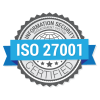A critical part of an IT project manager’s role is ensuring they can manage the contract life cycle of IT Professional Services under its supervision.
Once the Master Agreement has been signed (sometimes with little to no negotiation due to sensitive timelines of projects), dozens of ancillary contracts – from statement of works to SLAs – are agreed in the following months, and it can get quite tricky to keep track of everything that was negotiated in them.
In this article, we will explore 3 key best practices for managing a contract life cycle to ensure rate security and smooth running of your organization’s IT projects when outsourcing services.
Let’s get started.
To make sure you are obtaining the best possible outcome from the IT Professional Services contracts you need for your organization’s projects, there are 3 key best practices you should follow every time:
- Negotiate Rates and Terms Thoroughly
- Create Reliable Service Level Agreements (SLAs),
- and Monitor Monthly Invoices.
Negotiating Rates and Terms Thoroughly
When negotiating rates and terms for an IT Professional Services contract, it’s important to have a clear understanding of what you need from the vendor. This means outlining specific deliverables, timelines, and budgets upfront so that both parties are on the same page.
One way to ensure rate security throughout the contract is by using rate schedules. A rate schedule is a table that outlines the hourly rates for different types of services, such as programming, testing, and project management. It should also outline different rates depending on the level of seniority of the resource.
By using a rate schedule, you can ensure that the rates you negotiate at the start of the contract will be the rates you pay throughout the contract life cycle. This can help you avoid unexpected price increases or disputes over billing rates.
Creating a Reliable Service Level Agreement (SLA)
Another critical component of managing a contract for IT Professional Services is creating a reliable Service Level Agreement (SLA). An SLA is a document that outlines the expectations for service delivery, including response times, uptime guarantees, and performance metrics. By creating an SLA, you can establish clear expectations for the vendor and ensure that they are held accountable for meeting those expectations.
When creating an SLA, it’s important to involve stakeholders from both the IT and business sides of the organization. This will help ensure that the SLA is aligned with the overall business goals and objectives. Additionally, it’s important to regularly review and update the SLA throughout the contract life cycle to ensure that it remains relevant and effective.
Monitoring Monthly Invoices
Finally, monitoring monthly invoices is a critical component of managing a contract for IT Professional Services. This involves reviewing each invoice to ensure that it is accurate and in line with the agreed-upon rates and terms, a process that becomes much easier if a rate schedule has been agreed beforehand. It’s important to check for any discrepancies or errors, and to address them promptly with the vendor.
Although this process is obvious and simple enough, it’s not always easy to follow through. If you are the manager in your organization responsible for this, it’s safe to assume that at least a dozen contracts fall into your lap every week for various projects, and monitoring invoices line by line together with all the other priorities that has reached your desk can prove to be an almost impossible task.
One way to make the invoice monitoring process more efficient is by relying on software that can assist with this review. There are optimization tools in the market nowadays that can help automate the invoice review process, making it easier to track and manage invoices. Additionally, these tools can provide valuable insights into contract performance and help identify areas for improvement.
So, let’s recap on these important insights you have gathered today.
Managing a contract life cycle for IT professional services requires careful attention to detail and a proactive approach to risk management. By thoroughly negotiating rates and terms upfront, creating a reliable Service Level Agreement, and monitoring monthly invoices, you can ensure that your organization gets the most out of its IT services contracts.
Remember to use rate schedules to ensure rate security and consider using optimization software such as Thinking Machine to streamline the process. With these best practices in mind, you can successfully manage your IT services contracts and ensure that your organization achieves its goals.


